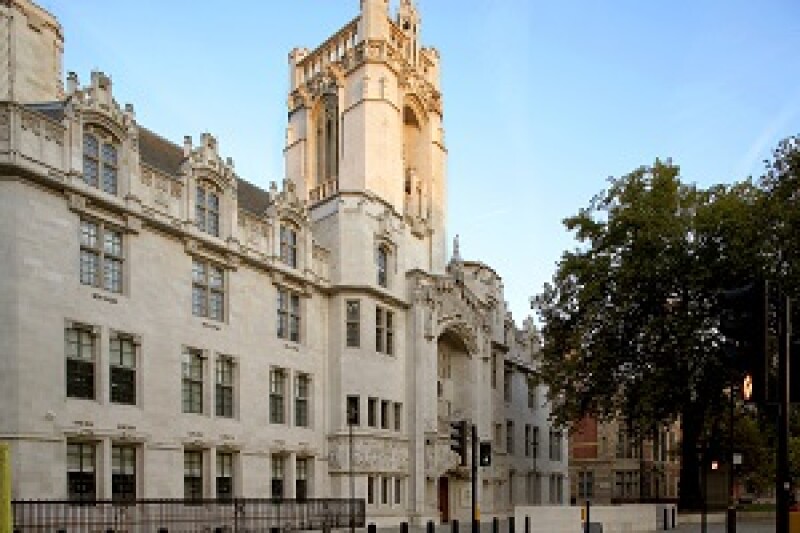
The UK Supreme Court’s decision in the Warner-Lambert pregabalin matter could have onerous consequences for innovator pharmaceutical firms and biotech companies, according to in-house counsel.
Sources say the decision is bad for rights holders because they will need to provide a broader range of evidence – which will take more time to gather – to justify the scope of their patent protection for second medical use claims.
“As with many Supreme Court decisions, we will have to wait and see how the lower courts apply it,” says the patent attorney at a UK pharmaceutical firm. “But my concern is that the higher hurdle for plausibility will be applied more widely, and that would increase the burden on patent applicants.”
The vice-president of IP at a UK biotech company adds that the decision does not reflect the scientific reality of drug development because of the complexities associated with animal models.
Last month, the Supreme Court rejected Warner-Lambert’s appeal that its patent for medication used to treat anxiety, epilepsy and neuropathic pain was sufficiently disclosed, and upheld Mylan and Actavis’s appeal that the disputed claims were not even partially sufficient.
|
|
“My concern is that the higher hurdle for plausibility will be applied more widely, and that would increase the burden on patent applicants” |
|
|
The question surrounding the case was how the concepts of sufficiency and infringement were to be applied to a patent relating to a specified medical use of a known pharmaceutical compound.
The reportedly raises the bar for Swiss form claims, and some of its reasoning could also apply to the medical use claims in the Article 54(5) EPC2000 format.
“My first thoughts were that it was interesting that the opinion on ‘plausibility’ was not unanimous, and the majority verdict was for a ‘higher’ bar,” the head of IP at the commercial arm of a UK university tells Managing IP.
The decision was welcomed by generics drug companies, who say it will benefit them.
“This is an important decision and a good one for us,” says the IP head at a Spanish drug company. “It will have an impact on our future decisions, but it obviously depends on the cases and the kind of projects we are working on, and whether there are patents on second medical use indications.”
The vice-president of IP at an Indian pharmaceutical firms adds that the generics companies should now ask Pfizer, which owns Warner-Lambert, for damages because of the company’s mistaken interpretation and the fact that it deprived generics companies of revenue and patients with access to a cheaper version of the drug.
The innovator impact
Sources say the decision could have a particularly severe impact on SME innovators.
The vice-president of IP at a UK biotech company points out that small companies and research institutions are often under pressure to file patent applications earlier than large companies.
“There is a drive to publicly disclose the invention earlier at a conference, for example, or when seeking funding,” she says “This decision puts us at a clear disadvantage as it seems the evidentiary bar has been set much higher, requiring much more data to be available at the filing date and we will not be able to rely on supplementary data to support our case as we previously have.”
Furthermore, she adds, the decision does not reflect the scientific reality of drug development.
|
|
“My concern is that this decision will lead to us needing human clinical data in the application in order to obtain second medical use claims” |
|
|
Many animal models and particularly mouse models, she explains, may be representative of a type of disease such as a number of types of pain, but not necessarily all subtypes such as neuropathic versus other pain.
But because the test models are in non-human animals, there will always be differences in the varying systems, including the precise effect of a therapy and how this is measured compared with the equivalent outcome in humans.
“There are some diseases for which there are no animal models that are a complete and true representation of what happens in the human system but the results obtained from the models available give confidence of what might be expected when the drug is used for treatment of a disease in humans,” she says.
She adds this true for a number of therapeutic areas, and the scientific community and regulatory authorities accept that fact and still allow drugs to enter the clinic to be tested on humans.
“They clearly think it plausible that it is possible on the basis of this data that the drug will have an effect on the diseases the applicant seeks to test.”
Yet, she adds, the Supreme Court is alluding in this decision that such claims are only obtainable once a company has an animal model that is specific for that disease or clinical data to show it works in that disease.
“We can’t be expected to test every single model in a disease area – these models are expensive and there are a great deal of ethical considerations that go with performing in vivo studies.
“Furthermore, there may be some diseases for which a mouse model just isn’t available. My concern is that this decision will lead to us needing human clinical data in the application in order to obtain second medical use claims.
She adds that for small companies, it is likely that second medical use claims will not be available because there will be a disclosure of the diseases being tested at some point before the data is available.











